COSMETIC DENTISTRY
If there’s something about your smile that causes you to lose confidence, to cover your mouth – or worse still, to smile less often – cosmetic dentistry may be a solution. Through cosmetic dentistry we can enhance your appearance and fix all those elements of your smile that keep you from looking and feeling your very best.
Thanks to the advances in modern cosmetic dentistry, today we have the tools to improve our teeth and smiles with quick and surprisingly affordable treatments – so nobody has to hide a flawed smile.


How can cosmetic dentistry help?
- Change the size, shape, and alignment of individual, problematic teeth
- Fill in unattractive spaces between teeth
- Improve or correct bites
- Repair decayed, broken, cracked, or chipped teeth with tooth-coloured fillings
- Lighten or brighten the colour of teeth
- Replace missing teeth
Invisalign
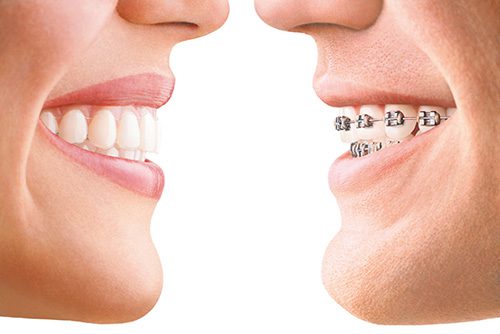

Braces have historically been the standard treatment for orthodontic correction. However, advances in technology have produced newer, less invasive forms of treatment that are a preferable alternative for many people.
Invisalign® can correct dental alignment issues and straighten your teeth, using removable and virtually invisible braces. This discrete alternative to metal braces does away with metal brackets and wires. Instead, you’ll receive a customised series of clear aligners which will straighten your teeth little by little over the course of several months – until you achieve your cosmetic goals.
To find out if you are a candidate for Invisalign®, you must first schedule a consultation with one of our dentists to discuss your personal cosmetic goals. If Invisalign® is suitable for you, your treatment will begin with impressions, photos and X-ray imaging of your teeth. This process will produce a set of custom aligners designed to slowly move your teeth into alignment. Aligners are worn at all times with the exception of when you are eating, brushing or flossing your teeth. Regular reviews ensure treatment progress. Once your treatment is complete, you will require a retainer (which you will wear at night) to help maintain your results.
Teeth Whitening
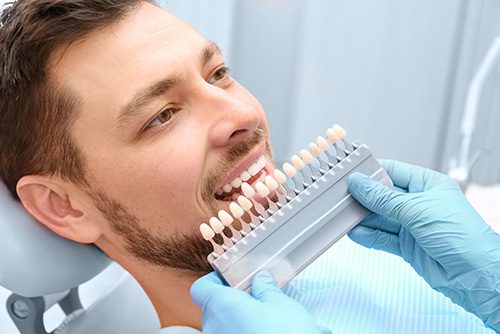

Teeth naturally darken as we age. Certain foods, beverages, medications and lifestyle habits can also contribute to a darker, yellowed or stained smile. If you are experiencing discolouration, but otherwise have healthy teeth and healthy gums, you may be a candidate for professional teeth whitening.
Teeth whitening can brighten the appearance of your smile, sometimes by as many as 5 to 10 shades in a single session. A single professional whitening session can help to erase years of stains, and sustain those results for many years with proper maintenance.
Professional whitening can be performed at your dental clinic, or prescribed for take-home use. Compared to over-the-counter treatments, professional whitening uses stronger whitening agents that deliver faster and more effective results. Following treatment, you may be instructed to avoid consuming highly pigmented beverages/foods (like tea, coffee and wine) for at least 48 hours to prevent the teeth from staining. It is also normal to experience some tooth sensitivity following a professional whitening agent.
Schedule a consultation with one of our dentists to find out if tooth whitening could be right for you.
Bridges


If you are missing a tooth (or teeth), a bridge is one option for replacing it, filling the space where a tooth once was.
As shown here, a typical bridge consists of a pontic (the missing tooth) that is attached to one or more surrounding crowns (abutments). Once constructed this bridge structure is bonded into the mouth. Without the use of a bridge, gaps in the mouth where natural teeth are missing can cause multiple teeth to shift, lead to bite interferences or jaw problems, and hasten periodontal disease. Beyond aesthetic enhancement, bridges safeguard the integrity of existing teeth and help maintain a functional, healthy and vibrant smile.
Crowns


If a tooth is extensively damaged, your dentist may choose to protect it by covering it with a crown – also known as a cap. The materials used to construct crowns vary depending on individual circumstance and preference. Crowns protect damaged teeth by improving the distribution of stress to the tooth, making the tooth strong and longer-lasting, particularly where there is a risk of a the tooth breaking or cracking.
Dentures
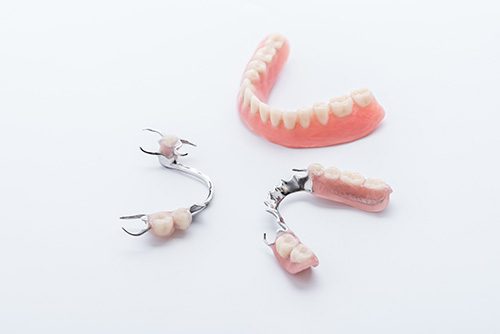

Dentures are removable tooth prosthetics designed to look and function like natural teeth. Most dentures are composed of acrylic replacement teeth attached to acrylic bases that take on the appearance of the gums. Dentures are used to compensate for one or more missing teeth, and are available as partial or complete sets of teeth.
Partial dentures rest on surrounding teeth and gums to fill in the gaps where one or more teeth are missing. Unlike a bridge, partial dentures are fully removable by the wearer. Partial dentures are affordable alternatives to other types of dental prosthetics and are custom-made to blend in with each patient’s natural teeth. It takes a little time to adapt to new dentures, but many people find that they reclaim much of their original dental function, aesthetic and speech.
If you are missing one or more teeth and think dentures may be the solution, a professional consultation with a dentist will give you the information you need to decide on the right form of treatment.
Dental Implants
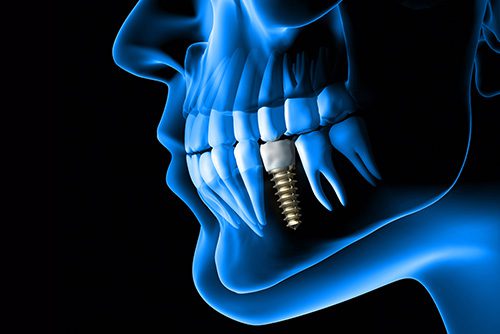

Dental implants are typically used for people who have either lost teeth, or are going to need teeth extracted. This treatment provides an artificial tooth root in the form of a titanium screw which is embedded in the jaw bone. The replacement tooth structure is then mounted onto this screw.
Many dentists and patients prefer dental implants because they offer the same function as natural teeth and also help prevent bone loss in the jaw. Dental implants may be used to replace a single missing or damaged tooth or to restore an entire smile and offer a strong and quite predictable long term result.
The placement of dental implants is a multi-step process that typically takes between 3-6 months to complete. It begins with a surgical procedure during which a titanium screw is carefully placed where a previous natural tooth root once was. At the conclusion of the healing period, when the bone has fused with the screw and is strong enough, the permanent crown or prosthesis is placed.
It is normal to experience some discomfort following a dental implant procedure, including bruising and swelling. However, with careful and gentle surgical techniques and appropriate aftercare most patients report minimal discomfort.
Inlays & Onlays


Inlays and onlays are dental restorations that are more extensive than dental fillings, but less so than caps and crowns.
They are typically formed in a dental laboratory and are made of gold, porcelain, resin or other alternatives depending on the patient’s needs and aesthetic goals. An inlay refers to a restoration that is formed to fit the center of a tooth. An onlay refers to a restoration that encompasses at least one cusp of the tooth. Both inlays and onlays are bonded to the surface of the damaged teeth.
Porcelain Veneers
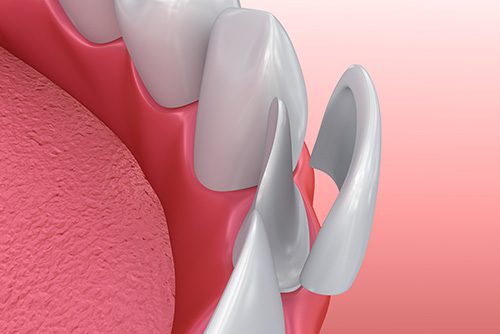

Dental veneers – also known as laminates – are used to cosmetically enhance the appearance of one or more teeth. Veneers are very thin porcelain or resin shells, bonded to the surface of the teeth. Customised for a desirable colour and shape, they can help you if you have gaps between your teeth or teeth that are broken, chipped, irregularly shaped or misaligned. Veneers also provide a solution for discoloured teeth that do not respond to traditional whitening treatments.
Patients with veneers typically achieve a natural tooth appearance that is well-tolerated by the gums and resistant to future stains. To find out more about whether dental veneers are right for you, contact us to schedule a consultation.
